A sequel to an earlier post, Gully Walking
I have always liked Robert Frost’s poem ‘The Road Not Taken’ even though I realised long ago how much he/it owed to my even more favourite poet, Edward Thomas who was also a close friend of his until his death in WW1.
However I too, early in life “took the one less traveled by, And that has made all the difference” – as Frost reflects, and I urge you to do the same.
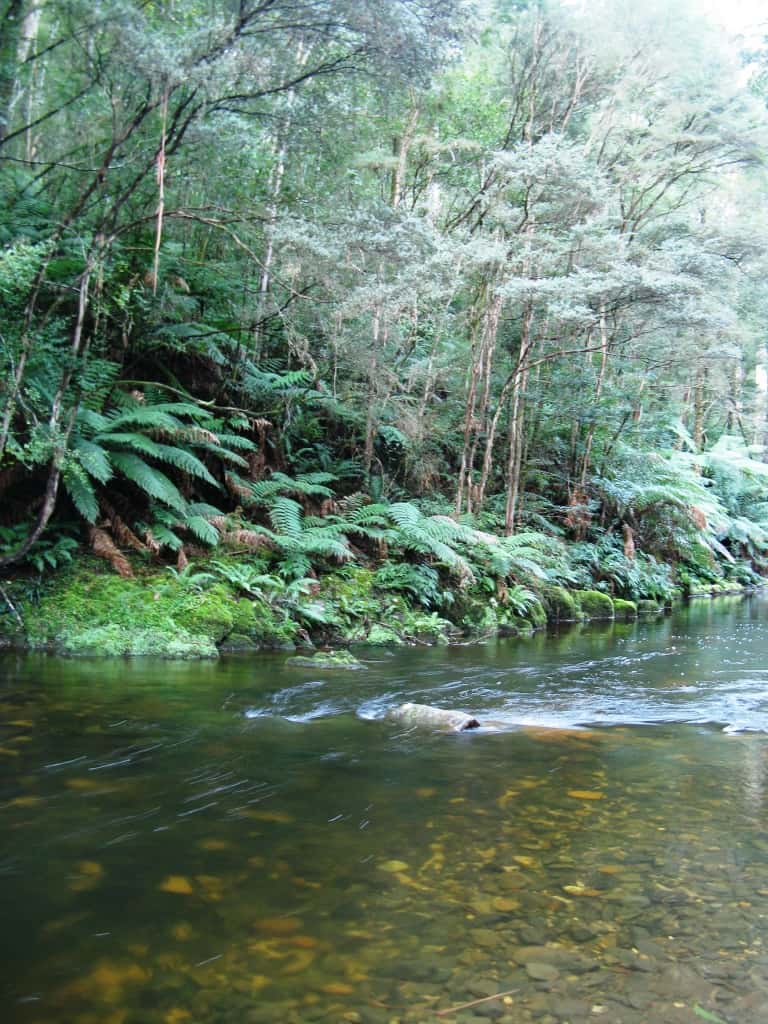
For those unfamiliar with it, here it is in its entirety:
The Road Not Taken
Two roads diverged in a yellow wood,
And sorry I could not travel both
And be one traveler, long I stood
And looked down one as far as I could
To where it bent in the undergrowth;
Then took the other, as just as fair,
And having perhaps the better claim,
Because it was grassy and wanted wear;
Though as for that the passing there
Had worn them really about the same,
And both that morning equally lay
In leaves no step had trodden black.
Oh, I kept the first for another day!
Yet knowing how way leads on to way,
I doubted if I should ever come back.
I shall be telling this with a sigh
Somewhere ages and ages hence:
Two roads diverged in a wood, and I—
I took the one less traveled by,
And that has made all the difference.
It is all very well (as a beginner hiker/woodsman) perhaps to first experience some of the outstanding ‘great walks’ which abound in your own country, but soon you will realize that they are both too crowded and have long since stopped providing quite the bliss of solitude and exploration which their creation perhaps envisaged. But you have to start somewhere.
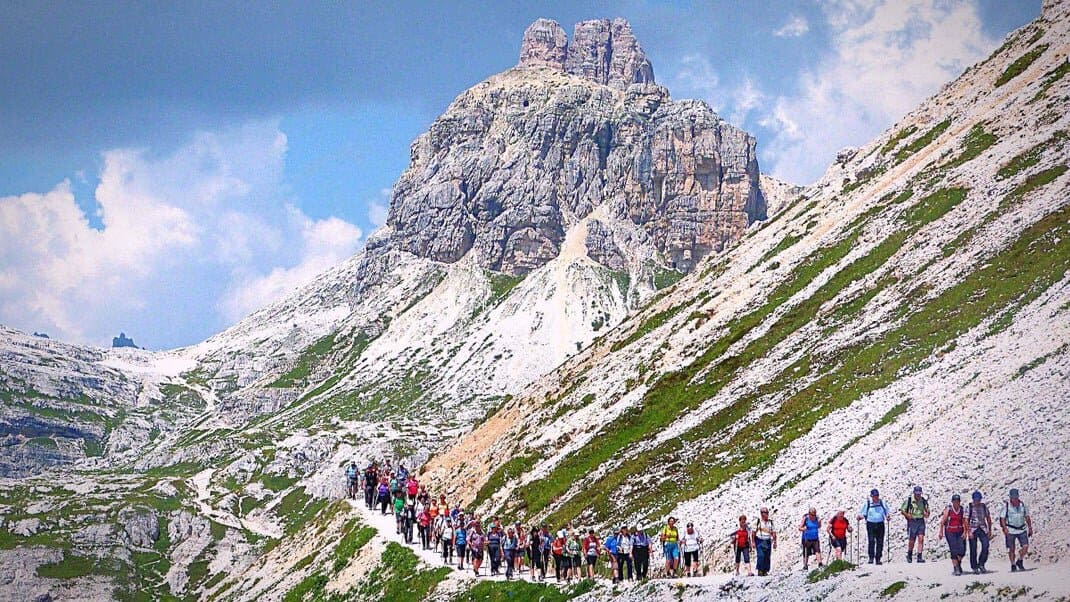
We saw the same thing in Scotland – somewhere not to walk, we thought:
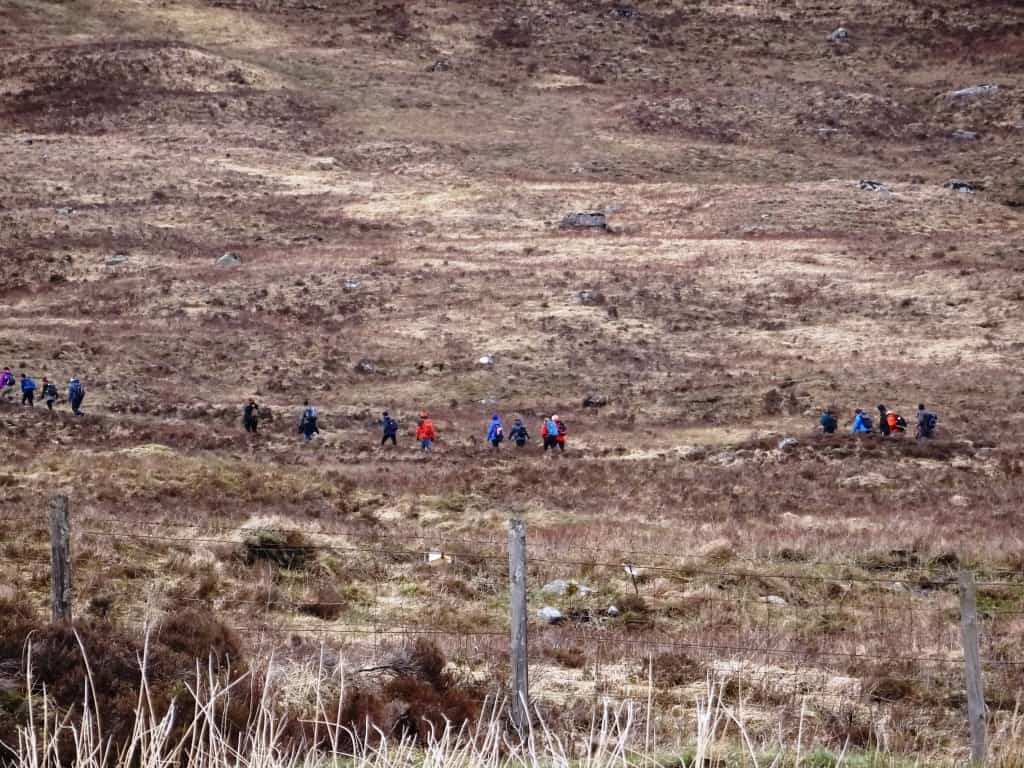
There is a better way:
Before you head off on your own ‘road’ you first need to master some bushcraft skills such as I have been talking about here for quite some time. You need to be able to find your way unaided (ie with just your senses and intelligence) through the trackless bush (eventually for days at a time) – and this takes study and practice. The posts linked to Ultralight Survival Made Easy are intended as a primer to enable you to do that, as well as to do so safely.
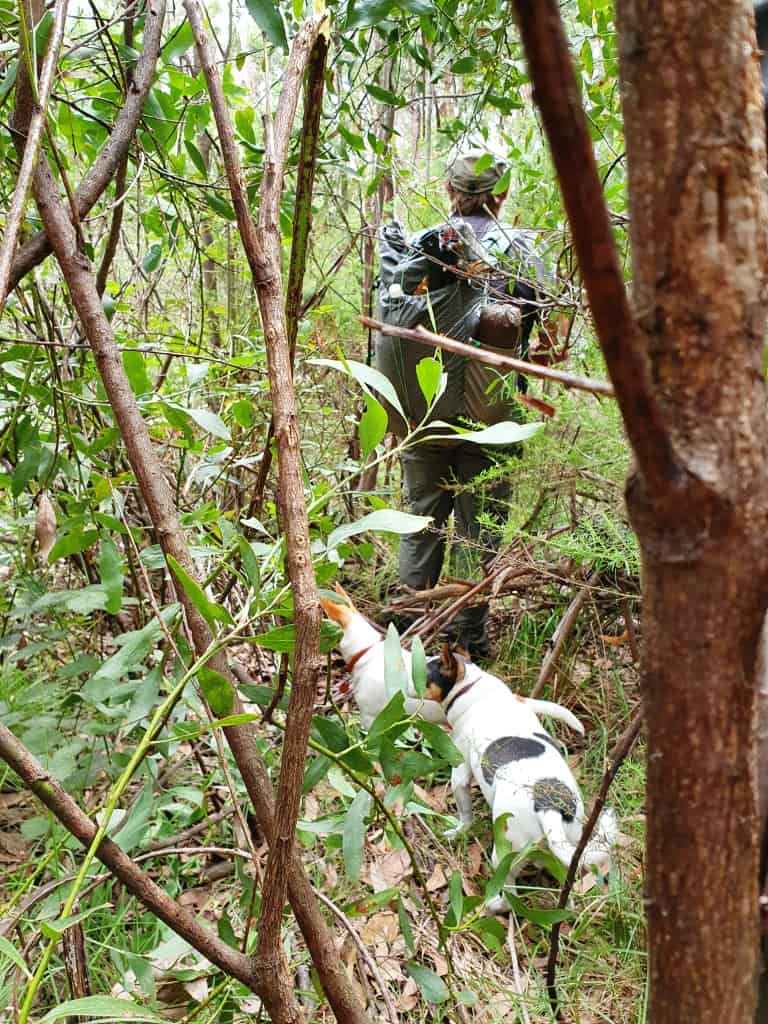
I think it might be well too to understand the points that I am trying to make in the post Nuts to ‘Leave No Trace’. Some of you will find it very hard to break free, but dogma is mostly a prison and being in the wilderness ought properly to be its very antithesis, ie freedom.
As I said there I am not advocating leveling the wilderness with bulldozers, but there is a quite vast gulf between that and never being able to even pick a wildflower for your beloved’s lapel, or to break a handful of boughs and ferns for a small camp and a bush bed, or virtually invisibly and judiciously to lop off small lower branches along a game trail so that walking along it is an easy pleasure (without ducking).
Only the very keen-eyed (fellow hunters and woodsmen) will notice where you have been, even though you have inadvertently made a path for others to follow. But it is an exquisite delight to have the feeling that yours have been the first eyes to spy out that secret place where you bed down for a solitary starlit night.
I think you should to begin (as I mentioned in my last post, Be Prepared) “Find some small valley which has ‘sides’ all around it from which you cannot possibly get lost then plunge right into it and wander around until you really can find your way unerringly with just the tools that birth gave you. You ought not to be out in the bush by yourself until you can find your way unaided”.
You will no doubt have selected this area from some topographic map of a wilderness area nearby. Most roads run along ridges but down below somewhere there is undoubtedly a delightful stream where no path leads. A delightful introductory weekend’s exploration can be simply heading down a ridge to that stream, searching along it for a suitable campsite, making a wilderness camp, spending a peaceful undisturbed night there, (perhaps highlighted with a meal of fresh-caught fish from the mountain stream) then retracing your steps the next day. This will make so much a better weekend trip than following some made path, that I suspect you will be immediately ‘hooked’ and no longer seek to simply follow where others have led.
The next step is to work out your own multi-day ‘loop’ so that you can return to your vehicle after a few days’ exploration and refreshment. Of course it is always delightful to camp along some mountain stream which is why I advised ‘gully walking’ but you can simply instead go up some other ridge then down another to a different watercourse then repeat this process again and again ending ultimately where you began – for as many days as you care to spend. The wilds are vast and time infinite so that it is unlikely that you will encounter any others in such travels. I seldom do anyway, yet I have been doing this for seventy years now!
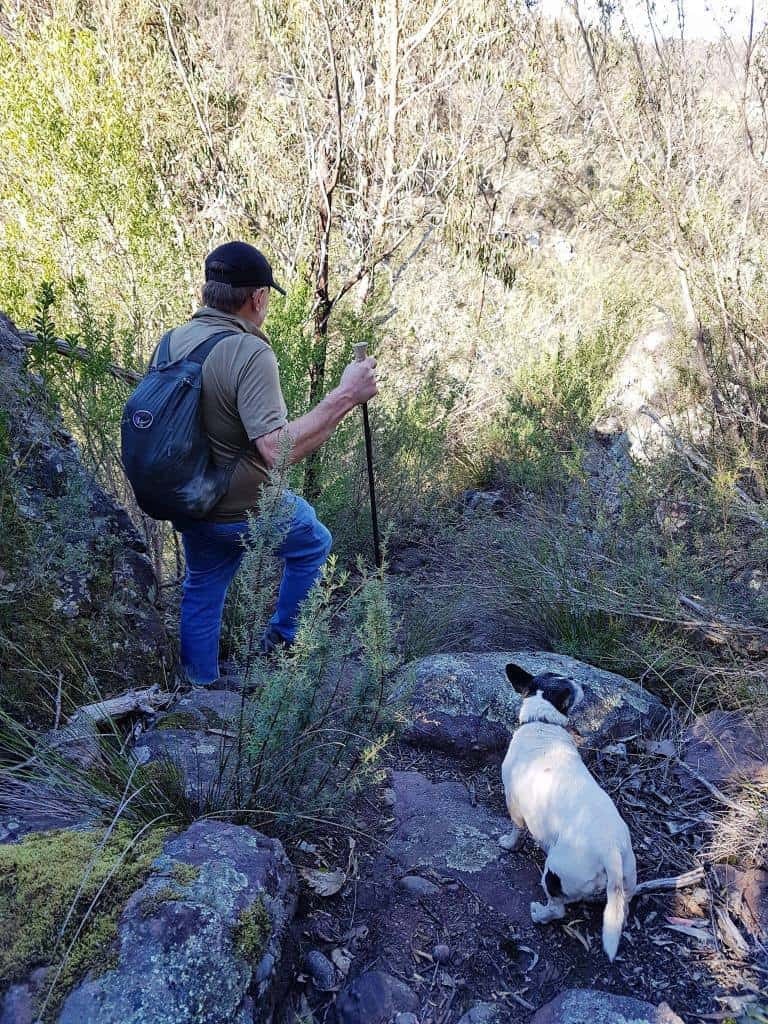
I have many such ‘loops’ which I pursue again and again, though I do not mind at all retracing my path either. Neither do I mind in the least revisiting old haunts. One of the benefits of which is that you can make small ‘improvements’ if you so wish: at least a small cleared area to erect your tent and a night’s supply of firewood stood to dry against a log, caches of food or equipment perhaps in canoe drums or heavy duty poly bags (maybe buried against pests/wildfire), a couple of useful tools (shovel, axe, mattock, frypan) left in a hollow tree, or you may chose to construct Debris Huts so that you have a purpose-built campsite with a cache of dry fire wood. If the area is very isolated and you are sure few or any other visitors use it, you may decide to construct a Wilderness Hut so that you can add to the comforts of your favourite escape. Do not be surprised (if you do) however to arrive sometime to find that someone else has arrived before you!
I find that my DIY lightweight hammock/tents and other equipment are convenient enough to carry that I need never construct such ‘permanent’ habitations, which means that I can always change my mind where I go and where I stay. I think overall that this s best, though I often leave a cache of firewood against a late arrival in camp.
I am not in the least concerned that what I advocate might not be utterly ‘legal’ “The law is an ass” is as true today as it ever was, and frankly now that I am well into my eighth decade of life I haven’t the time to wait on bureaucrats and such fussy folks to decide on a change of rules, nor do I think much would happen to me at my age if I were caught – in the unlikely event that some gendarme should start wandering the remote back country. You can do as you see fit, just don’t trouble me with moralising or proselytising.
Coast walking is another pleasant ‘trackless’ form of walking where it is probably much harder to become lost but easier to suffer from thirst! You should realise that in the late C18th a party of shipwrecked mariners (on the Gippsland Coast) walked to Sydney which was the only settlement (then) around 800 kilometres away. Clearly there were no ‘made’ tracks then. No doubt also they had some difficulty crossing the numerous rivers and lakes along the way (some with the assistance of ‘friendly ‘ aborigines apparently (they were lucky in that – others sometimes met with cannibals!) However they had very little equipment such as the ‘modern’ hiker ought to have (though no doubt better survival skills). Nonetheless their journey illustrates the possibilities of ‘coast walking’. You don’t need some government bureaucrat to have designated an official ‘trail’. Do it yourself.
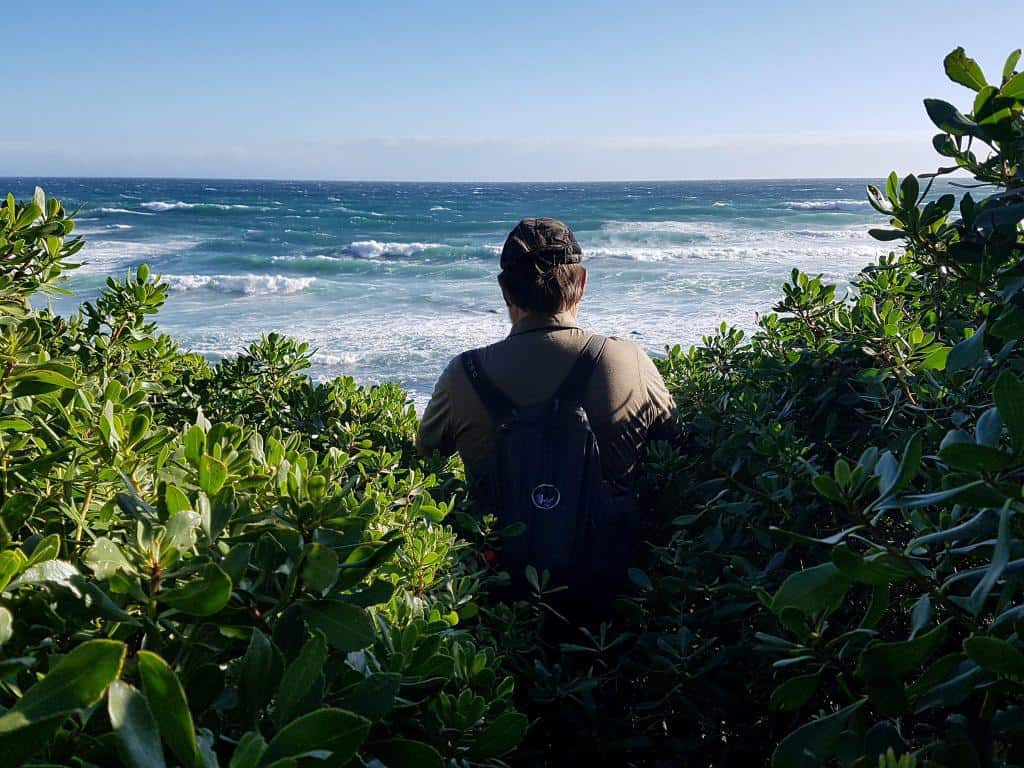
Australia as over 20,000 km of such coast though some of it is ‘desert coast’ where special (water) skills would be needed (or ultralight desalination equipment), but (at least) from the South Australian border all the way to the Queensland border it ought to be possible to do this (in sections). I have been slowly checking out chunks of it with a view to posting a possible long circuit utilising a long coastal walk (at least from Phillip Island (Melbourne) to past the NSW border (Eden) – around 500 kilometres. See The Great Gippsland Circuit. This is a beautiful and pleasant journey which should be very little trouble much of which I have walked in sections years ago. Some parts (along the ninety mile beach) you will require you to carry water for a couple of days.
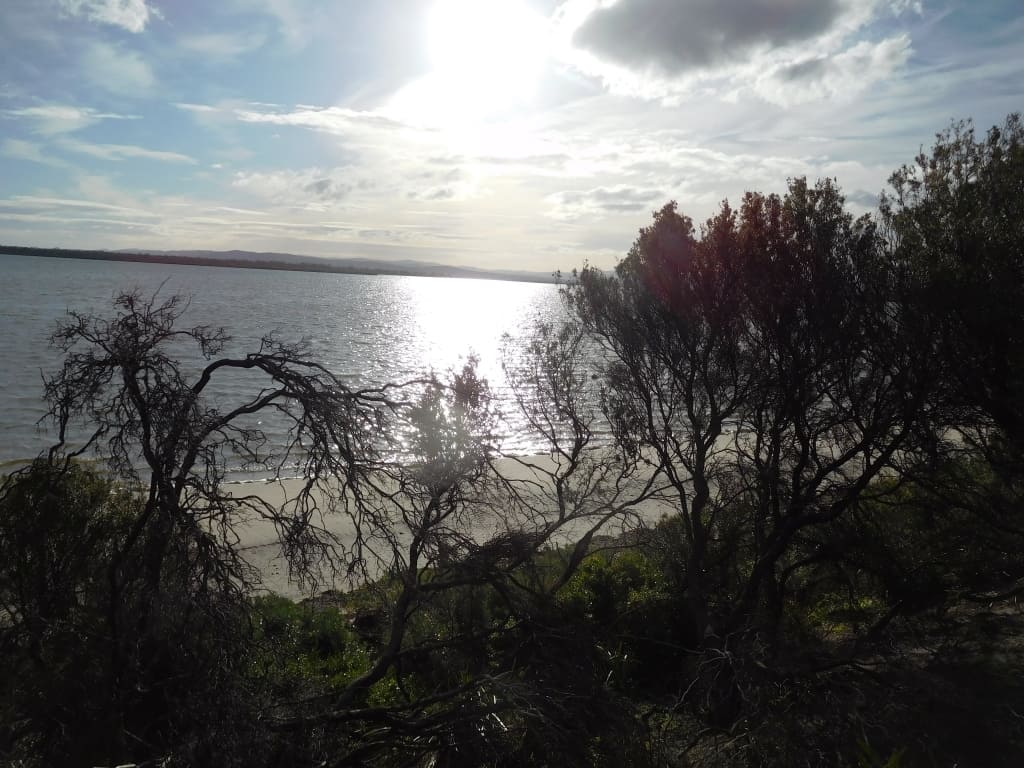
Most headlands you will find a path over broken down by local fishermen and the like linking beach to beach. Where there are not you will have to do a bit of bush-bashing on your own account. Often you can creep around the end of a headland in calm weather at low tide but you have to be careful of rogue waves. There are hundreds (indeed of kilometres) of rock platforms along that coast just below the tide marks clear yet mute testimony to a time not so long ago when the sea level was higher and clawed the cliffs down into such wave-worn flats. Yes higher, not lower – just as it was warmer during the Middle Ages when our ancestors farmed Southern Greenland or grew wine grapes in Scotland. We noticed walking around Green Island near Cairns that there were platforms of coral 1-2 metres higher than the current high tide mark – again testimony to a time not so long ago (coral is fairly soft and easily worn away) when the sea level was much higher.
The coast goes ever on and on – to misquote Bilbo…
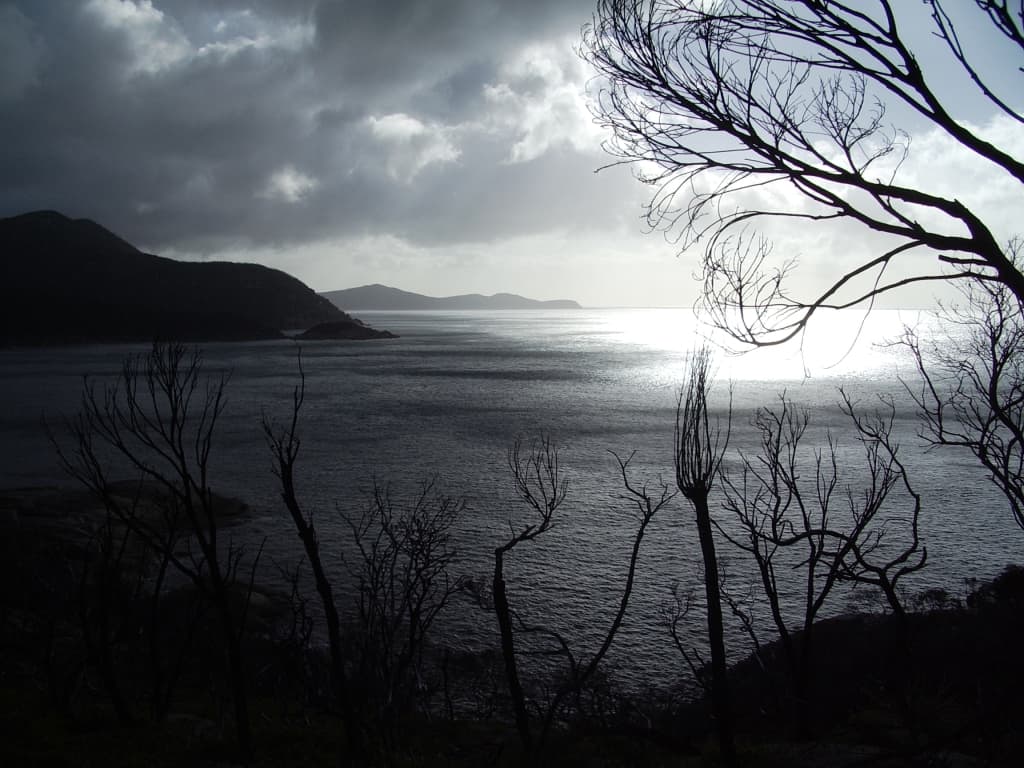
Why not begin your journey today?

Nice post. Couldn’t agree more with the sentiment.
Thank you Alan. It must be a bit harder to find people-free walks in the UK as it’s so crowded and developed. There must be sections of the coast, mountains and forestry blocks where you can get away from the made paths though. Enjoyed looking at your lovely blog by the way. Cheers, Steve.
If you are just starting out hiking in the UK then finding those Gems can be difficult. However 60yrs experience means that you can find areas where you will hardly ever meet anyone else. I thought you’re image of Scotland was quite funny. I admit to never having seen a “troop” like that but if you encounter a walking club outing then that is what you get. Walking in NZ is quite different although on the popular trails like Abel Tasman for instance (which I have done a few sections) you do meet many like minded people. Your blog is excellent btw.
Thanks Alan. In a quite short trip we managed to find some places without people in Scotland (fortunately) so they are definitely out here. And in OZ and NZ (as you say) there are crowded trails eg ones you have to book or groups of twenty are allowed to set off every twenty minutes or so. To me this would be ghastly and to be avoided. The best way to avoid them is to walk where there are not trails at all, which is what the post is about really.